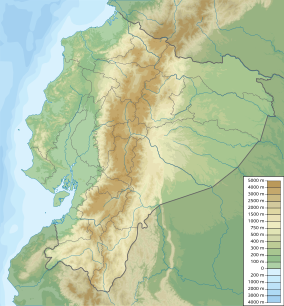
Magnolia is a large genus of about 210 to 340 flowering plant species in the subfamily Magnolioideae of the family Magnoliaceae. It is named after French botanist Pierre Magnol.
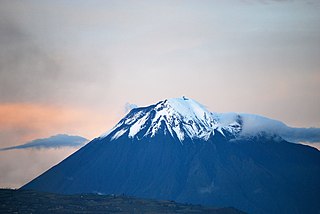
Tungurahua is an active stratovolcano located in the Cordillera Oriental of Ecuador. The volcano gives its name to the province of Tungurahua. Volcanic activity restarted on August 19, 1999, and is ongoing as of 2013, with several major eruptions since then, the last starting on 1 February 2014.

Tungurahua is one of the twenty-four provinces of Ecuador. Its capital is Ambato. The province takes its name from the Tungurahua volcano, which is located within the boundaries of the provinces.
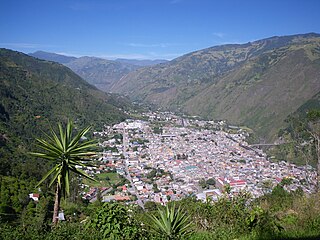
Baños de Agua Santa, commonly referred to as Baños, is a city in eastern Tungurahua Province of Ecuador. Baños is the second most populous city in Tungurahua, after the capital Ambato, and is a major tourist center. Baños is known as the "Gateway to the Amazon," as it is the last city still located in the mountain region before reaching the jungle and other towns that are located in the Amazon River basin.
Píllaro is a city in Ecuador, located in the province of Tungurahua. It is the capital of the Píllaro Canton and stands about 19 km northeast of Ambato, the provincial capital.
Pentacalia millei is a species of flowering plant in the family Asteraceae. It is found in Ecuador and Peru. Its natural habitats are subtropical or tropical moist montane forests and subtropical or tropical high-altitude grassland. It is threatened by habitat loss.
Hyloxalus marmoreoventris is a species of frogs in the family Dendrobatidae. It is endemic to Ecuador and only known from its type locality on the eastern slope of the Andes in the Tungurahua Province. It is a little known species which possibly has not been observed after it was first described.
Hecistopteris pinnatifida is a fern species in the Vittarioideae subfamily of the Pteridaceae. It is endemic to Ecuador. Its natural habitat is subtropical or tropical moist lowland forests. It is threatened by habitat loss.
Magnolia boliviana is a tree in the family Magnoliaceae native to the rainforests of the eastern Andean foothills of Bolivia.
Magnolia wolfii is a tree species in the family Magnoliaceae. It is endemic to Colombia. The species is recorded only from one locality in Risaralda Department. The species is being investigated by a conservation and propagation research program implemented by the Technological University of Pereira, with the support of Botanic Gardens Conservation International.
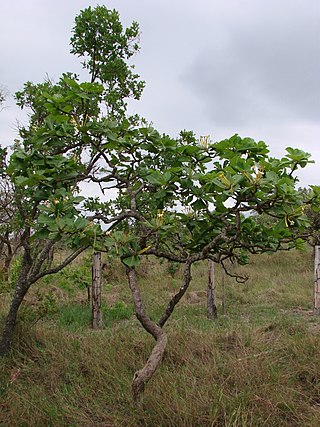
Tocoyena is a genus of plant in family Rubiaceae.

Welfia is a genus of palms found in Central America and northwestern South America. Only two species are currently recognized: Welfia regia and Welfia alfredii.

Smallanthus is a genus of flowering plants in the tribe Millerieae within the family Asteraceae.
Luticola evkae is a species of non-marine diatom first found in lakes of James Ross Island.
Polygala westii is a very rare plant species in the family Polygalaceae. It is an annual herb which is 10 to 12 centimetres tall and it produces green flowers. It is endemic to southern Africa.

Bulbophyllum sect. Trias is a section of the genus Bulbophyllum.
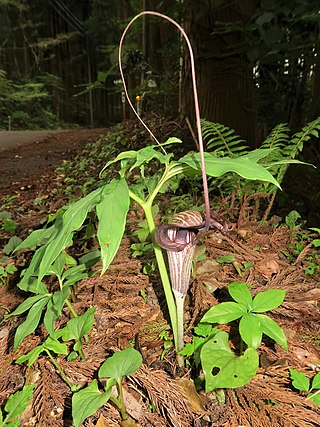
Arisaema section Flagellarisaema is a section of the genus Arisaema.
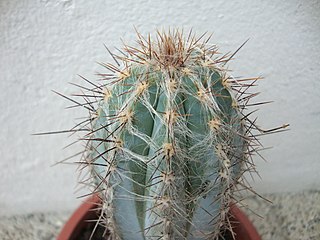
Pilosocereus colombianus is a species of Pilosocereus found in Valle del Cauca Department, Colombia and Azuay, El Oro, Guayas, Loja, Manabí, and Santa Elena Provinces of Ecuador
Malesherbia lirana is a perennial herb whose native range is from Argentina and Chile. The species has racemose inflorescences that are 2 - 3.9 cm in size and cream colored petals. It flowers in spring to late summer.
Malesherbia scarlatiflora is a shrub native to the pacific slopes of Peru. It grows up to 1 meter tall, has narrow ovate-acuminate leaves, and orange flowers.

